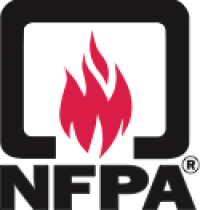Eight firefighters and a police officer were injured at a solar energy storage facility in the aptly named town of Surprise, Arizona last month when they answered a call to inspect an energy storage system (ESS) fire. The situation quickly took a turn for the worse when an explosion blew the container’s doors off. The first responders, two of whom were severely injured, suffered fractures, thermal and chemical burns, and other injuries.
For several years now, we have seen the use of commercial and residential Energy Storage Systems (ESS) and photovoltaic systems (PV) surging. While the environmental and economical attributes of these new technologies are clear; the immediate need for first responder training on these new technologies has been less so. As evidenced in Arizona, ESS incidents can pose potential harm to first responders who may encounter HAZMAT issues, thermal runaway concerns, battery explosion and re-ignition, and off-gassing.
To help first responders handle possible hazards, the National Fire Protection Association (NFPA) has updated its first-of-its-kind, free, online ESS training so that responders have easy access to the information they need to do their jobs effectively. The updated and enhanced ESS safety training for the fire service takes into account new technology insights, relevant research, and solar considerations.
“While the investigation of this incident continues, one of the early lessons we can take away from the ESS explosion in Arizona is that the fire service needs guidance and proper training so that they can safely respond to ESS emergency calls,” said NFPA President and CEO Jim Pauley.
Training to Safely Handle Renewable Energy Sources
To help the fire service handle the unique challenges presented by these new renewable energy technologies, NFPA has developed Energy Storage and Solar Systems Safety Training, Fire Service Edition*. The enhanced three-hour module uses engaging videos, animations, simulations, and review exercises to inform firefighters about basic electrical theory, types of PV installations, battery chemistries, pre-incident planning, and response strategies. Fire leaders and training personnel are encouraged to educate themselves and others on ESS failure modes, pre-incident planning, shutdown, ventilation, and other emergency response considerations.
NFPA’s ESS training was underwritten by the Federal Emergency Management Agency (FEMA) first in 2015, and again recently so that first responders have the most up-to-date information. During the 3-hour online module, first responders will learn how to safely deal with emergency situations involving high voltage commercial and residential ESS units and photovoltaic systems (PV). A built-in learning management system allows students to exit the program at any time and return where they left off. Students will demonstrate proficiency in course content by completing a series of data reviews at the conclusion of each training module. Students will earn a Certificate of Attendance from NFPA if they successfully pass the reviews.
“By all accounts, alternative energy use in the United States will continue to rise, with states including Massachusetts, Texas, Oregon, Colorado, and Hawaii mandating widespread energy storage system deployment. We can’t let technology outpace safety,” says Pauley. “It is critical that fire officers, trainers, firefighters, and AHJs are well-versed on ESS and solar response scenarios for their own safety and the safety of others.”
The NFPA isn’t stopping their ESS information and knowledge efforts at their online training program for the fire service. The organization has produced relevant ESS research which has been well-received by a host of disciplines, and is currently developing NFPA 855, Standard for the Installation of Stationary Energy Storage Systems which will establish criteria for minimizing the hazards associated with ESS technology. NFPA 855 is slated for release later this year, and will work in concert with the new National Electrical Code, Article 706.
Visit nfpa.org/ess for relevant codes and standards, research, and related content.













